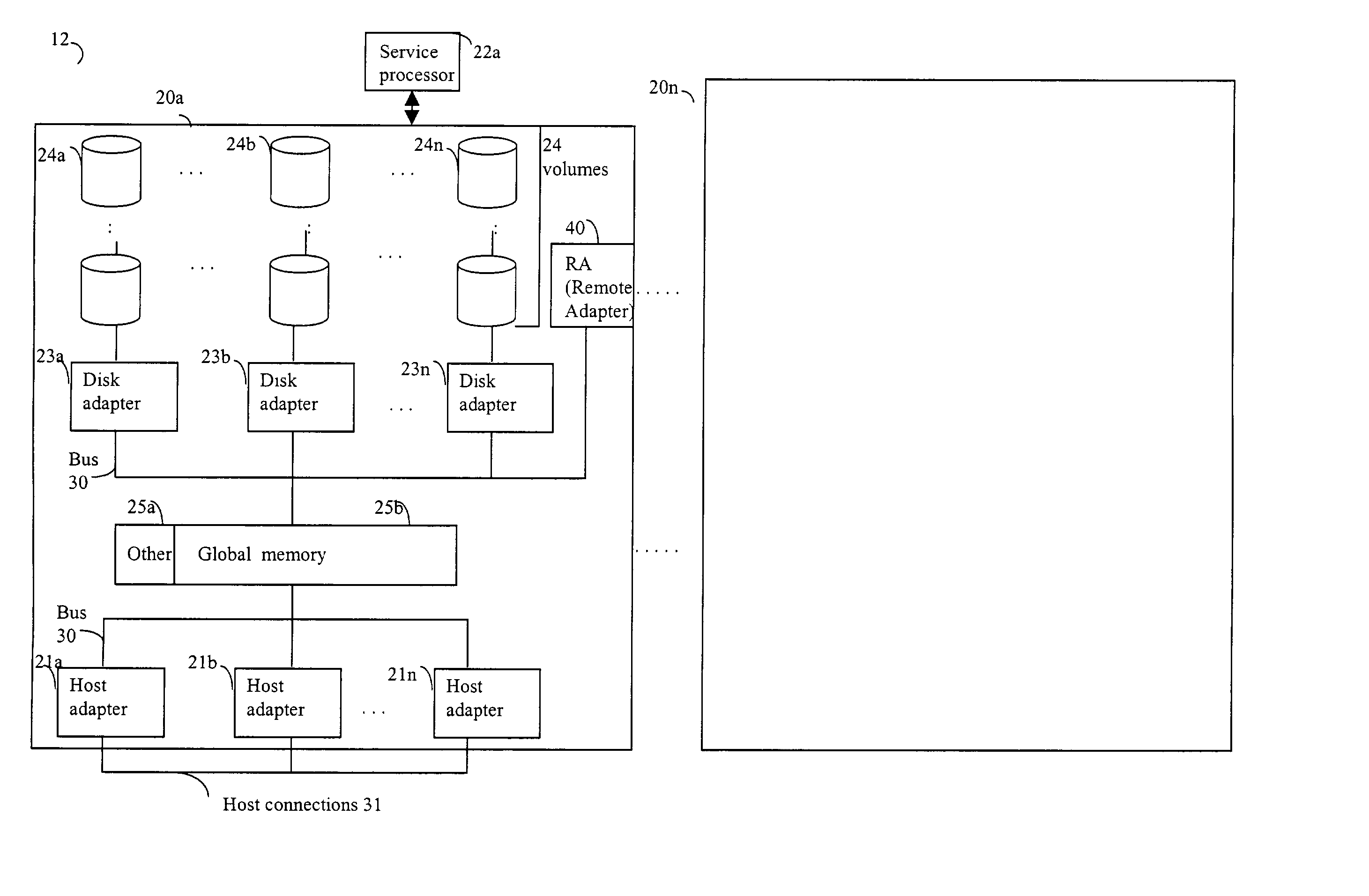End-to-end checksumming for read operations
a technology of read operations and end-to-end checks, which is applied in the field of data corruption detection, can solve problems such as data corruption not being detected, applications may not be able to detect bad incoming data, and data corruption may occur
- Summary
- Abstract
- Description
- Claims
- Application Information
AI Technical Summary
Problems solved by technology
Method used
Image
Examples
embodiment 50
[0051] Referring now to FIG. 3, shown is an example of a host that may perform I / O operations, for example, in connection with a storage device that may be included in the data storage system 12 previously described herein. It should be noted that the illustration 50 includes particular components that may be included in an embodiment of the computer system 10 of FIG. 1. Other components may also exist, however, only those components used in connection with the following description are included for simplification.
[0052] A host computer system, such as host 14a, may perform an I / O request to a storage device, such as storage device 52. Additionally, as host computer system 14a performs the I / O operation to the storage device 52 over communication connection 56, information about the particular I / O operation may be recorded in a transaction log. The transaction log may be stored in another data storage device, such as storage device 54. It should be noted that the communication conne...
embodiment 900
[0137] Referring now to FIG. 20, shown is an example of a scatter-gather list. A scatter-gather list may be implemented as an array as shown here, a linked list or other equivalent data structures as known to those skilled in the art. In this particular embodiment, an array may include one or more entries in which each entry includes information referencing a particular portion of memory. In particular, an entry includes a PTR field 902a a size field 902b and other information may also be included. The PTR field 902a may be a pointer or an address to a particular buffer area of memory. Size field 902b indicates the size of the buffer portion identified by the address in the field 902a PTR. Using this particular data structure, the actual physical location of data or memory locations associated with a logical data buffer may be represented.
[0138] In connection with using an SGL with performing I / O operations, the operating system and drivers normally provide for the SGL referring to ...
embodiment 1000
[0170] Referring now to FIG. 24, shown is an example of an embodiment 1000 showing how a read buffer is originally mapped into physical memory by an MDL. The original read buffer 1002 is mapped by MDL 1004 into physical memory 1006. Each of the different portions of the virtual address of the read request 1002 such as A, B, C and D are also shown in physical memory 1006 at similarly labeled locations. In this particular instance, assume the master IRP or parent IRP corresponding to the buffer 1002 is subdivided into a plurality of child IRPs. One of the child IRPs corresponds to writing portion A of the original read request. One important point to note is that each of the child IRPs uses the same MDL as the parent IRP which is MDL 1004 in this instance. When the SCSI port driver services a child IRP, the SCSI port driver uses a subset of the pages described in the MDL 1004 to construct a corresponding SGL.
[0171] It should be noted that if, when servicing a child IRP, the data stora...
PUM
 Login to View More
Login to View More Abstract
Description
Claims
Application Information
 Login to View More
Login to View More - R&D
- Intellectual Property
- Life Sciences
- Materials
- Tech Scout
- Unparalleled Data Quality
- Higher Quality Content
- 60% Fewer Hallucinations
Browse by: Latest US Patents, China's latest patents, Technical Efficacy Thesaurus, Application Domain, Technology Topic, Popular Technical Reports.
© 2025 PatSnap. All rights reserved.Legal|Privacy policy|Modern Slavery Act Transparency Statement|Sitemap|About US| Contact US: help@patsnap.com



